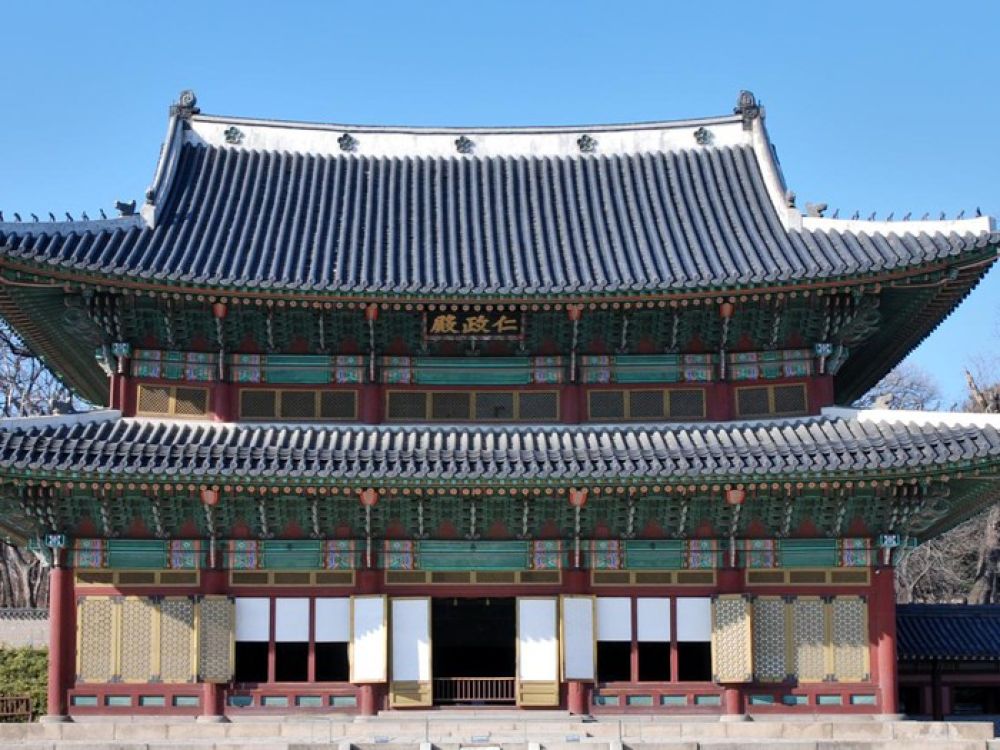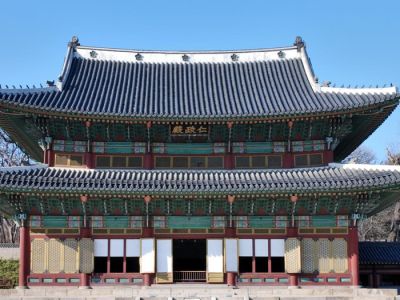

Delve into the heart of Korean culture at the Ssamziegil Complex, a quirky and artsy shopping center located in the Insadong neighborhood of Seoul. This unique space is famous for its spiraling walkway that winds around the building, leading visitors past an array of boutique shops, handicraft stores, and art galleries. As you explore the various levels, you'll encounter a mix of traditional and contemporary Korean goods, perfect for finding that special souvenir or gift. The complex also occasionally hosts cultural events and activities, providing insight into the richness of Korean traditions. Amidst the shopping experience, take a break in one of the charming tea houses or cafes to savor traditional Korean tea and snacks, which further enhances the immersive cultural journey.
Experience the serene elegance of a traditional Korean tea ceremony in the atmospheric backstreets of Insadong. Numerous tea houses are tucked away in this historical neighborhood, offering a peaceful respite from the hustle and bustle of the city. In these authentic settings, a tea master will guide you through the intricate process of brewing and serving tea, steeped in centuries-old customs. Engage your senses as you savor the delicate flavors of fine Korean teas, learn about the time-honored traditions, and perhaps try your hand at the thoughtful gestures and precise etiquette of this cultural practice. More than just a refreshing beverage, the tea ceremony is a window into the soul of Korean culture, emphasizing harmony, respect, and tranquility.
Immerse yourself in the ancient art of Korean calligraphy with a hands-on workshop in Insadong. Korean calligraphy, known as Seoye, is a practice of writing Hangul (the Korean alphabet) or Hanja (Chinese characters used in Korean texts) with brush and ink, both as an art form and a meditative activity. In these workshops, typically held at cultural centers or specialized studios, an experienced instructor will introduce you to the various brush strokes, techniques, and the philosophy behind this beautiful art form. Participants get to create their own piece of calligraphy, providing a unique and personal memento of their visit to Seoul. No prior experience is necessary, and all materials are usually provided for the session.
The Kyung-In Museum of Fine Art stands as a serene and scholarly oasis within Insadong's vibrant cultural landscape. As you step into its tranquil courtyards and garden, the museum offers a contemplative environment where traditional Korean aesthetics blend seamlessly with contemporary artistic visions. The museum's collection comprises various forms of art, including paintings, sculptures, ceramics, and textiles by both emerging and established Korean artists. Occasional workshops and educational events provide deeper engagement with the region's art. Whether you're an art enthusiast or simply seeking a moment of reflection, the enchanting ambiance of the Kyung-In Museum of Fine Art provides an enriching escape into the world of Korean artistry.
Situated just a short walk from the heart of Insadong, Jogyesa Temple is the chief temple of the Jogye Order of Korean Buddhism, making it a significant spiritual and cultural landmark. The temple complex is an oasis of calm, featuring beautifully painted buildings, a Zen meditation hall, and a lovely courtyard with a majestic white pine tree, which is several hundred years old. Throughout the year, Jogyesa Temple is vibrant with color from seasonal flowers and traditional lanterns, and it hosts various Buddhist ceremonies and festivals, most notably during the Lotus Lantern Festival in celebration of Buddha's birthday. Visitors are welcome to enter the main hall, admire the intricate designs, and observe the worshipers paying homage. The temple is an active place of worship, so it's important to show respect and observe silence when appropriate.
Insadong Street, the main thoroughfare of the district, is a vibrant pedestrian-friendly zone that showcases the rich tapestry of Korean culture and history. As you amble down the street, you'll be greeted by a mix of traditional tea shops, antique stores, art galleries, and street vendors. Make sure to venture off the main street into the alleys and backstreets, where you'll find authentic Korean restaurants, craft workshops, and hidden gems. During your exploration, look out for street performances, traditional music, and perhaps a chance to try on hanbok, the elegant Korean national costume. On weekends, Insadong Street becomes even livelier with its cultural street market, where you can shop for unique Korean crafts and sample an array of street food delicacies.
Philately enthusiasts and curious visitors alike will find delight in Insadong's Philatelic Museum. Housed within the Korea Postage Stamp Museum, it offers a journey through Korea's postal history and the evolution of its postal service. The museum boasts a vast selection of stamps from both the past and present, showcasing the cultural, historical, and natural subjects that have featured on Korean postage. For a unique and personal keepsake, the museum's service counter allows visitors to create their own custom stamp sheets, complete with chosen images or photographs—an ideal memento or gift. With its mix of educational exhibits and interactive experiences, the Philatelic Museum is a quaint and educational stop in Insadong.
The Alive Museum in Insadong presents a playful and immersive world of visual illusions that defy reality. This interactive museum is a family-friendly attraction, inviting visitors of all ages to become part of the exhibits. Photographs come to life as you interact with 3D optical illusion paintings and cleverly designed sets that trick the eye. It's a place where you can let your imagination run wild, capturing amusing and surreal photos as you pose with the artworks. Highlights include gravity-defying rooms, oversized objects, and scenes from Korean folklore that will spark both laughter and wonder. Prepare to spend an entertaining hour or so as you explore the twists and turns of this fascinating museum.
Discover a piece of Korea's royal past at Unhyeongung Royal Residence, located on the outskirts of Insadong. This historical site once served as the residence of Heungseon Daewongun, regent and father to King Gojong of the Joseon dynasty. Visitors to Unhyeongung can admire traditional Korean architecture, beautifully restored to showcase the buildings' original splendor. The highlights include Norakdang Hall, where significant ceremonies were held, and Irodang Hall, which offered panoramic views of the surrounding city. The residence also serves as a venue for cultural events and reenactments of royal court life. Surrounded by modern Seoul, Unhyeongung provides a vivid glimpse into the lifestyle of Korean nobility during the Joseon period.
Situated in the cultural heart of Insadong, Maru Theater is a compact yet vibrant venue that showcases a variety of traditional Korean performances. Here, you can experience Korea's rich performing arts heritage, including live music, dance, and dramas. The performances often include English subtitles or explanations, making them accessible to international visitors. Maru Theater prides itself on intimate settings that allow for an up-close appreciation of the performers' skills and the intricacies of their artistry. Whether it's the mesmerizing melody of a gayageum (Korean zither) or the rhythmic beats of samulnori (traditional percussion), an evening spent at Maru Theater is a cultural highlight that gives voice to the timeless traditions of Korean entertainment.
